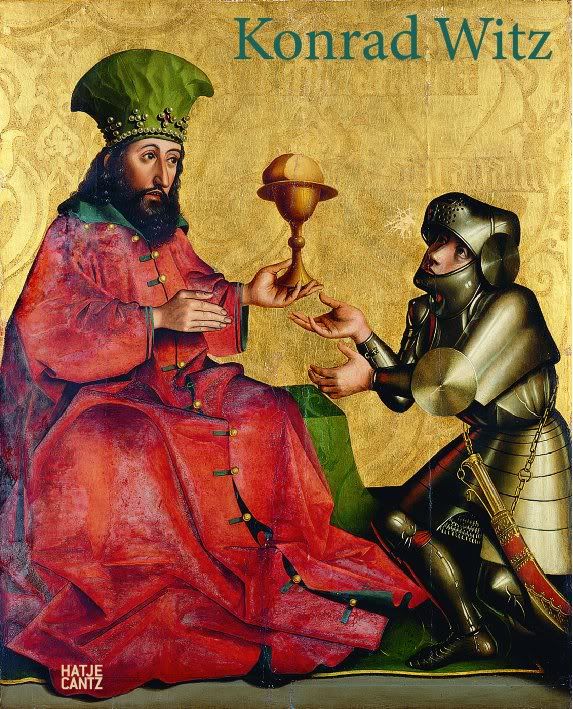|
|
Post by RicWilly on Mar 21, 2011 21:29:10 GMT
Does anyone know what type of sword the knight is wearing in this picture and where one could get one like it?  |
|
ghost
Member
Posts: 1,331
|
Post by ghost on Mar 21, 2011 21:34:31 GMT
Looks like a seax from here.
myarmoury has such a huge base of collectors on seax, if this is one...
|
|
Luka
Senior Forumite
Posts: 2,848
|
Post by Luka on Mar 21, 2011 21:39:43 GMT
It might be some kind of bauernwehr...
|
|
Lunaman
Senior Forumite
Posts: 3,974
|
Post by Lunaman on Mar 21, 2011 21:42:53 GMT
^^^What Luka said, it's hard to tell from the image. Try Tod's Stuff. I dunno if anyone else makes that sort of thing. www.todsstuff.co.uk/ |
|
Deleted
Deleted Member
Posts: 0
|
Post by Deleted on Mar 21, 2011 22:03:09 GMT
If anything, it looks more cutlass inspired to me,

though it could simply be a design the artist thought looked good without really being any particular "type" of sword.
|
|
Razor
Senior Forumite
Posts: 1,883 
|
Post by Razor on Mar 21, 2011 22:06:30 GMT
|
|
|
|
Post by LittleJP on Mar 21, 2011 22:08:46 GMT
It's either a falchion or a seax.
|
|
|
|
Post by Dave Kelly on Mar 21, 2011 22:24:04 GMT
Konrad Witz was a 15th Century German painter who home based out of Basil Switzerland. His reputation rests on three altar pieces surviving. Period altar displays were narrative themed multi panelled affairs.
Given the fact this is 15th Century Basel it could be a messer or falchion. But if the theme of the panel is Biblical it could just as easily be an oriental sword.
This pic is a book cover that I can't find a matching descriptor for that tells what the subject is.
Hope that provides someone a clue. Best I can do...
|
|
ecovolo
Senior Forumite
Retired Moderator
Posts: 2,074
|
Post by ecovolo on Mar 21, 2011 22:38:48 GMT
|
|
|
|
Post by chuckinohio on Mar 21, 2011 22:52:15 GMT
I think that image is taken from the Heilspiegel altar piece.
|
|
|
|
Post by chuckinohio on Mar 21, 2011 23:30:42 GMT
It is from the Heilspiegel altarpiece at the church of St. Leonhard in Basel.
The picture depicts Abraham before Melchizedek.
|
|
SanMarc
Senior Forumite
Posts: 3,193
|
Post by SanMarc on Mar 21, 2011 23:31:37 GMT
It is a Falicoin, nothing else....SanMarc.
|
|
|
|
Post by Dave Kelly on Mar 21, 2011 23:46:37 GMT
Ya beat me to it. Found a legible copy on a german site and the script in the background says Melchisedek and Abraham.
|
|
|
|
Post by chuckinohio on Mar 21, 2011 23:51:29 GMT
Seems like it was popular to depict Abraham with a Falchion type blade.
Renaissance artistic interpretation I suppose.
|
|
|
|
Post by RicWilly on Mar 22, 2011 9:04:04 GMT
Thanks for the replies, friends. I was aking on behalf of a friend on facebook. I have forwarded the consensus and a link to this discussion.
|
|
|
|
Post by MOK on Mar 23, 2011 17:14:34 GMT
True, Oriental characters were often portrayed with curved blades as a sort of artistic shorthand, but most of the time the actual weapons depicted were European style falchions, messers, stortas etc. rather than actual Eastern sword types, these being what the artists had on hand for reference.
Considering the time and place, this would almost have to be a falchion or messer of some kind, and more probably the latter. The difference between these is mainly in hilt construction: messers had slab tangs sandwiched between riveted grip plates, just like many knives (in fact, "messer" is German for "knife"), whereas falchions had more conventional sword-like hilts with distinct pommels. Now, I'm not 100% sure, but I think I can see the back of a full tang there between brass or latten (or gold, who knows) grip slabs, and there's also no crossguard and the pommel shape is typical of messers. I wouldn't call it a grossemesser (German for "big knife"), either, because it's really not all that large and lacks the crossguard that makes grossemessers so much more useful for fencing than just any old large knife.
So given all that, I'd put my money on it being a particularly ornate messer, hauswehr or bauernwehr - all different terms for a late Medieval or Renaissance group of large knives pretty much ubiquitous in German-speaking regions, carried as a general purpose cutting tool as well as a handy close-range weapon, like a forerunner of bowie knives. Also, I'd give 50/50 odds that the specimen portrayed here is either completely fictional or based on a more mundane piece with a healthy dose of artistic license and embellishment.
|
|
|
|
Post by Elheru Aran on Mar 23, 2011 20:27:24 GMT
That's why the popular (Western) impression of a 'scimitar' for a long time was something like this:  Medieval artists drew their inspiration from falchions, messers and such-- MOK is quite correct about that. Examples from period art:   An actual example (I think):  It's only been recently that people understand that 'scimitars' are a quite different animal than what was portrayed for a long time. |
|
|
|
Post by kurokaze on Mar 24, 2011 23:11:34 GMT
|
|

